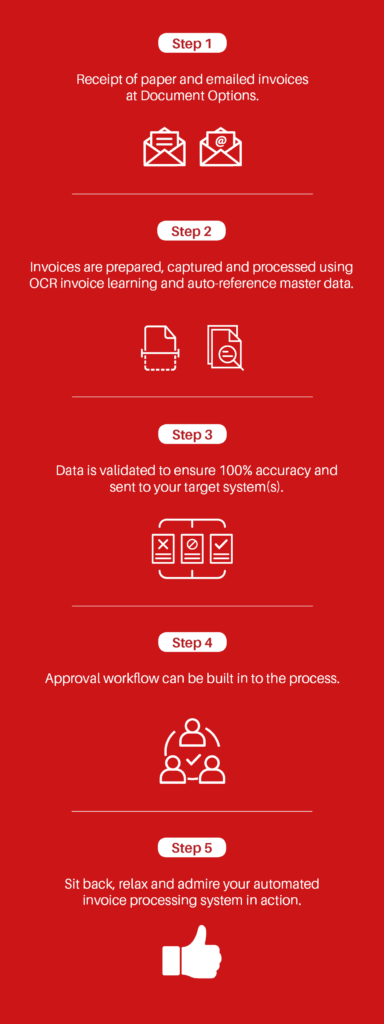How does automated invoice processing work?
Productivity is extremely important for businesses. Getting more work done to a high standard is a vital element of running a smooth operation, and companies should always be looking for ways to improve their productivity.
A good place to start is by looking at everyday activities that take up a significant portion of time for your team. Invoice processing is a very good example of this. The manual method of processing invoices is time inefficient and relies on a number of different tasks having to be performed constantly: entering invoice data, creating invoices, matching purchase orders and constantly filing or adding to the system.
This is why invoice processing is such a good candidate for automation. But how does automated invoice processing actually work? And is it the right choice for your business?
What is automated invoice processing?
Automated invoice processing is a method of using software to carry out a number of tasks in invoice processing. These include extracting data from invoices, populating that data into an accounts payable system, and processing the invoice data for accounts payable.
It is useful for not only data entry and transferring payments, but also matching prices, managing purchase orders and streamlining your business workflow.

How automated invoice processing works
The traditional method of processing invoices is drawn out across a large number of steps that often involves input from a variety of people. Typically, it will start with the accounting department receiving an invoice, this will then be matched and approved.
Once this has been completed, the details must be manually entered into the system where it can be posted, and then payment can be issued. Depending on the specifics of the company’s system, there could be as many as 15 steps in the process.
Automated invoice processing seeks to simplify, streamline and computerise many of the aspects of this process.
With an automated process, the invoice arrives and is then immediately scanned and fed into a digital accounting software. Capturing the data in this manner removes hours of manual data entry by the accounts team. The invoice automation software then converts the data into a text-searchable document. Invoices can then be sent out to anyone who needs to review and approve them.

The benefits of automated invoice processing
There is actually a wide range of benefits for automated invoice processing. Firstly, it saves your business a significant amount of time for your accounting team and can provide them with more time to carry out more valuable work for your company.
Additionally, it can cut down on the number of errors created by manual data entry, speed up the process of approval, reduce issues like duplicated payments and invoices, and even keep your invoicing costs lower.
Is it right for your business?
Some companies still believe that automating processes is something that is exclusively useful and valuable for larger businesses. However, this is no longer the case. Process automation is actually now far more affordable than ever before, and the costs of setting it up can be exceeded by the savings it will bring. This means it offers good returns on investment.
If your company processes any number of invoices from 100 to 1000 and even 4000/5000 a month, then this can save you time and money, and potentially open up greater opportunities for your accounting team.
Interesting in automated invoice processing?
If you think that automated invoice processing might be an interesting option for your business, get in contact with the team at Document Options today. We have years of experience helping organisations automate their processes and we can do the same for you.

